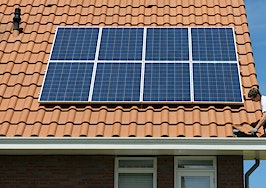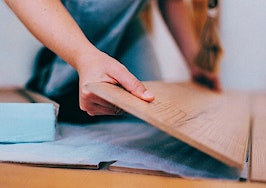Used all over the world for countertops, residential furniture, cabinets and work surfaces in offices and hospitals, the humble plastic laminate is essentially layers of plastic bonded to particleboard or Kraft paper.
The material has been in use for over 100 years, and it’s known by a variety of generic and product names like plastic laminate, PLAS LAM, Formica, Nevamar, Pionite and Wilsonart.
Westinghouse Electric Company originated the material in 1912 for use as a replacement for the silicate material mica in electrical applications as an insulator. The name “for mica” came from its original use as a substitute for mica. Cincinnati was the birthplace of Formica, invented by engineers Donald O’Conor and Herbert Faber.
Since that practical beginning, it’s been developed into an endless assortment of colors and patterns, and used in applications ranging from decorative to technical. For the purpose of clarity, plastic laminate will be referred to as Formica, the oldest brand name currently still in use.
Plastic laminate made its first appearance in Great Britain when it was used for the highly decorative interiors of the ocean liner Queen Mary in 1934. Real estate agents will want to emphasize to their clients that the postwar 1940s and 1950s saw Formica come into popular use as a hardworking, inexpensive-yet-cheerful surface.
In its early days, Formica was simply layers of fabric bound together with resin. Later, the composition was refined to thick pieces of paper laminated with melamine. This tougher substance could withstand heat and abrasion, while the paper enabled the featuring of color and pattern. The ability to produce a product that was durable and fashionable led to plastic laminate, in its many iterations, which remains popular to this day.
While today Formica is seen most frequently in residential kitchens and bathrooms, its early uses, as I mentioned, were primarily industrial. In the 1930s, engine parts for cars, including Chevrolet, Buick and Pontiac were a very popular use. Formica became even more popular as a cheap substitute for lacquer during the Art Deco craze, which demanded sleek black surfaces.
Real estate did indeed impact the growth of Formica as a building material in the post-World War II building boom. The explosive building boom not only saw kitchens, breakfast bars and bathroom counters using Formica, but furniture and fixtures for schools, hospitals, restaurants, retail stores and offices that sprang up around the new suburban housing developments used the material as well.
Fashion and lifestyle influence the marketing of all products for the home — and Formica is no different. While once produced in solid colors, wood grain and replications of marble and stone, new collections mimic paper, leather, shale, silk, and other fabric surfaces.
Patterns include abstracts and iridescent silk with names including “Manhattan Glamor,” “Straw Matrix” and “Lunaria Eclipse.” Who can resist a durable, reasonably priced, practical surface with so many options and alluring names? What’s more, a new collection called “Knot Quite Menswear” offers patterns in tweed, herringbone and argyle.
In addition to colors and patterns, the surface finishes available offer even more options — matte, textured, gloss, high gloss, metallic and acrylic.
Newer varieties include marker or chalkboard finish that can be used as a whiteboard and easily erased, fire-retardant finishes, anti-bacterial finishes, magnetic laminates and electrostatic dissipation laminates which can be used as circuit boards — almost coming full circle to the products original use as an electrical insulator.
Colorcor was another innovation that Formica introduced to prevent dark lines when the 8-by-4-foot sheets were seamed. This innovation added the color of the material from the surface to the underlying materials, so no dark lines appeared when two sheets met.
Post-formable Formica was developed so that sheets could be curved and used to wrap columns and circular table bases. Prior to post-formable Formica, the sheets could only be applied to flat surfaces.
Replacing Formica surfaces — whether it’s counters, cabinet doors or walls — will give a new, clean and modern appearance to even the most worn kitchen or bathroom.
Agents who understand the availability of different laminates and their many options bring an advantage to their clients when discussing renovation options. Formica, which came from humble beginnings, has had a long life with no end in sight.
Gerard Splendore is a licensed associate real estate broker with Warburg Realty in New York. Connect with him on LinkedIn.













